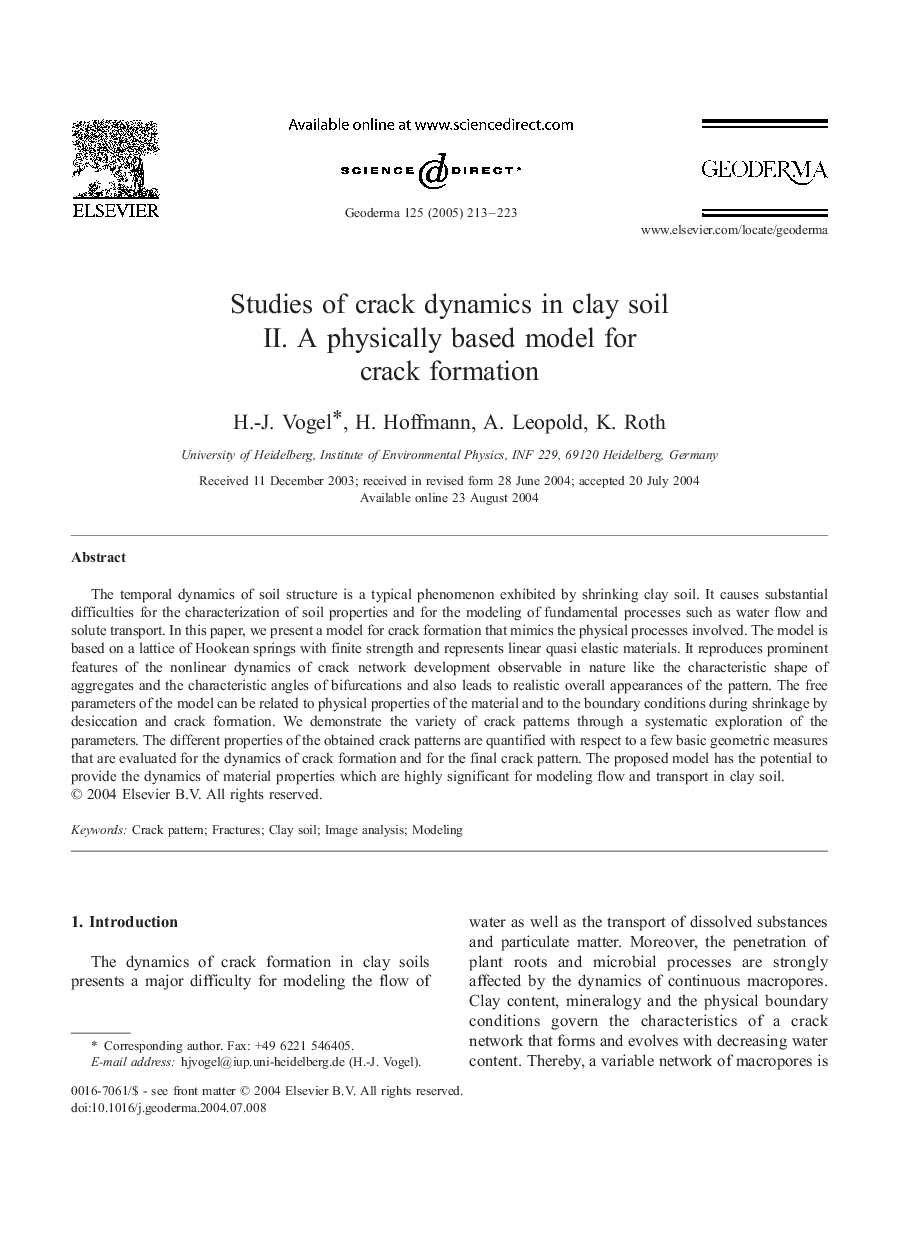| Article ID | Journal | Published Year | Pages | File Type |
|---|---|---|---|---|
| 9490471 | Geoderma | 2005 | 11 Pages |
Abstract
The temporal dynamics of soil structure is a typical phenomenon exhibited by shrinking clay soil. It causes substantial difficulties for the characterization of soil properties and for the modeling of fundamental processes such as water flow and solute transport. In this paper, we present a model for crack formation that mimics the physical processes involved. The model is based on a lattice of Hookean springs with finite strength and represents linear quasi elastic materials. It reproduces prominent features of the nonlinear dynamics of crack network development observable in nature like the characteristic shape of aggregates and the characteristic angles of bifurcations and also leads to realistic overall appearances of the pattern. The free parameters of the model can be related to physical properties of the material and to the boundary conditions during shrinkage by desiccation and crack formation. We demonstrate the variety of crack patterns through a systematic exploration of the parameters. The different properties of the obtained crack patterns are quantified with respect to a few basic geometric measures that are evaluated for the dynamics of crack formation and for the final crack pattern. The proposed model has the potential to provide the dynamics of material properties which are highly significant for modeling flow and transport in clay soil.
Related Topics
Physical Sciences and Engineering
Earth and Planetary Sciences
Earth-Surface Processes
Authors
H.-J. Vogel, H. Hoffmann, A. Leopold, K. Roth,
